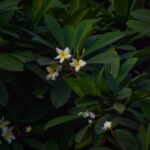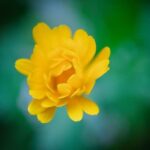Are you looking for landscaping ideas for flower gardens to enhance the beauty of your outdoor space? Flower gardens are a beautiful and uplifting addition to any backyard or outdoor area, providing a burst of color and fragrance that can transform the atmosphere. In this article, we will explore the importance of landscaping for creating stunning flower gardens and provide essential tips for designing and maintaining your own garden oasis.
When it comes to creating a gorgeous flower garden, choosing the right flowers is crucial. Factors such as climate, soil type, and personal preferences all play a role in selecting the best flowers for your garden. Additionally, the design and layout of your flower garden can greatly impact its overall appeal. Whether you prefer a traditional style, modern design, or cottage garden aesthetic, there are various landscaping designs to consider that will complement your chosen flowers.
Another key aspect of successful flower gardening is planning for seasonal blooms and incorporating a variety of flowers that bloom throughout the year. This ensures that your garden remains vibrant and colorful no matter the season. Additionally, understanding color coordination in flower gardens can help create visually appealing combinations of flowers that add depth and interest to your outdoor space. Stay tuned as we delve deeper into these topics in the upcoming sections.
Choosing the Right Flowers
When it comes to choosing the right flowers for your garden, there are several factors to consider. One of the most important considerations is the climate in your area. Different flowers thrive in different climates, so it’s essential to choose flowers that are well-suited to your region’s weather conditions.
For example, if you live in a hot and dry climate, you may want to consider drought-tolerant flowers like lavender, yarrow, or blanket flower. On the other hand, if you live in a cooler climate with plenty of rainfall, flowers like astilbe, delphinium, and bee balm may be better options.
Another critical factor to consider when selecting flowers for your garden is the type of soil in your area. Some flowers prefer well-draining soil, while others thrive in moist or acidic soil. Before choosing which flowers to plant, it’s essential to test your soil and determine its pH level and composition. This will help you select flowers that are well-suited to the specific needs of your garden’s soil.
Lastly, personal preferences play a significant role in choosing the right flowers for your garden. Consider factors such as color preferences, flower size and shape, fragrance, and maintenance requirements when selecting which flowers to plant.
It’s also helpful to think about how you intend to use your flower garden – whether it’s for creating a peaceful retreat, attracting pollinators, or adding curb appeal to your home. Ultimately, selecting the best flowers for your garden should align with both practical considerations and personal taste.
| Climate | Suggested Flowers |
|---|---|
| Hot and Dry | Lavender |
| Cooler Climate with Rainfall | Astilbe |
Design and Layout
When it comes to designing and laying out a flower garden, there are various landscaping styles to consider. Each style offers its own unique charm and can complement different types of homes and outdoor spaces. Here are some popular landscaping designs and layouts for flower gardens:
1. Traditional Style: A traditional flower garden exudes elegance and timeless beauty. This style often features symmetrical patterns, well-defined borders, and a mix of perennial flowers such as roses, lilies, and daisies. Consider incorporating classic elements like a wooden picket fence or a stone pathway to enhance the traditional vibe of your garden.
2. Modern Style: For those with a contemporary taste, a modern flower garden offers clean lines, minimalism, and innovative plant arrangements. Opt for sleek, geometric shapes in your garden layout and focus on using bold colors and striking foliage plants to create an eye-catching display. Incorporating minimalist hardscaping elements such as concrete pavers or steel edging can further emphasize the modern aesthetic.
3. Cottage Garden Style: Embrace a romantic and rustic feel by adopting a cottage garden design for your flower garden. This style is characterized by an informal layout with overflowing beds of mixed flowers, including old-fashioned favorites like peonies, hydrangeas, and delphiniums. Add whimsical touches like arched trellises or rustic benches to complete the charming cottage garden look.
By exploring these different landscaping designs and layouts for flower gardens, homeowners can find inspiration to create their own beautiful outdoor oasis that reflects their personal style preferences while displaying an array of stunning blooms all year round.
Whether you prefer the classic elegance of a traditional garden or the contemporary appeal of a modern landscape design, there is bound to be a style that suits your taste when creating your own floral wonderland using landscaping ideas for flower gardens.
Seasonal Blooms
When planning a flower garden, it is crucial to consider the seasonal blooms and incorporate a variety of flowers that bloom throughout the year. This ensures that your garden remains vibrant and colorful regardless of the season. By carefully selecting flowers that bloom in different seasons, you can enjoy a continuously changing display of colors and fragrances in your outdoor space.
One landscaping idea for flower gardens that incorporates seasonal blooms is to create a diverse mix of annuals, perennials, and bulbs. Annual flowers such as petunias, marigolds, and zinnias are known for their long-lasting blooms and are perfect for adding pops of color throughout the summer months. Perennial flowers like lavender, daylilies, and coneflowers offer blooms in spring and summer while bulbs such as daffodils, tulips, and crocuses provide early spring color.
In addition to selecting flowers with staggered blooming periods, it’s important to consider the overall design and layout of your garden to ensure a continuous display of blooms. By strategically planting early-blooming, mid-season, and late-blooming flowers throughout your garden beds, you can create an ever-changing tapestry of colors that delights the senses year-round.
| Flower Type | Season |
|---|---|
| Annuals (e.g. petunias, marigolds) | Spring to fall |
| Perennials (e.g. lavender, daylilies) | Spring to summer |
| Bulbs (e.g. daffodils, tulips) | Early spring |
Color Coordination
When it comes to creating a stunning flower garden, color coordination is key. The art of combining different flower colors to create visually appealing arrangements can truly elevate the overall look and feel of your outdoor space. Whether you prefer a vibrant and eclectic mix of hues or a more harmonious and calming color palette, there are various ways to approach color coordination in your flower garden.
Understanding Color Theory
Before diving into the specific combinations of flowers for your garden, it’s essential to have a basic understanding of color theory. Colors can be categorized into primary (red, blue, yellow), secondary (orange, green, purple), and tertiary (yellow-orange, red-orange, etc.) hues.
Complementary colors – such as purple and yellow or red and green – are located opposite each other on the color wheel and create striking contrast when paired together. On the other hand, analogous colors – which are adjacent on the color wheel, such as red, orange, and yellow – create a more harmonious and cohesive look when combined.
Creating Visual Impact
To create visual impact in your flower garden, consider incorporating bold and contrasting colors that catch the eye. For example, pairing deep purple petunias with bright yellow marigolds can create a striking display that draws attention. Alternatively, if you prefer a softer and more soothing aesthetic, opt for an analogous color scheme with varying shades of pinks and purples.
Considering Seasonal Blooms
When planning your color-coordinated flower garden, it’s important to consider the seasonal blooms of your selected flowers. By strategically choosing flowers that bloom at different times throughout the year, you can ensure that your garden maintains its colorful display across all seasons. Incorporating early spring bulbs like tulips or daffodils alongside summer-blooming roses or dahlias can provide a varied spectrum of colors throughout the year.
By incorporating these landscaping ideas for flower gardens in terms of color coordination, you can create a visually captivating outdoor space that reflects your personal style while enhancing the natural beauty of your home. Whether you opt for vibrant contrasts or harmonious blends of colors, thoughtful selection and placement of flowers will undoubtedly elevate the overall aesthetic appeal of your garden.
Incorporating Hardscaping
When it comes to creating a stunning flower garden, incorporating hardscaping elements can greatly enhance the overall look and appeal of the outdoor space. Hardscaping refers to the non-living or hard elements within a landscape design, such as pathways, borders, and decorative features. By strategically incorporating these elements, you can create a visually appealing and functional flower garden that complements the natural beauty of the flowers.
Here are some tips for incorporating hardscaping elements into your flower garden:
- Pathways: Consider adding pathways made of materials such as stone, gravel, or brick to create a sense of structure and organization within the garden. Pathways not only add visual interest but also provide practicality by allowing easy access for maintenance and enjoying the garden.
- Borders: Use borders to define different areas within the flower garden, such as separating various types of flowers or designating specific zones for different purposes. Borders can be created using materials like wood, metal, or even low-growing plants for a more natural look.
- Decorative Features: Enhance the aesthetic appeal of your flower garden by incorporating decorative features such as ornamental sculptures, fountains, or trellises. These elements can serve as focal points and add personality to the garden while complementing the beauty of the flowers.
By carefully considering these hardscaping elements in your landscaping ideas for flower gardens, you can create a well-designed and visually striking outdoor space that showcases the natural beauty of your flowers while adding functionality and interest through hardscape design.
Maintenance and Care
Watering
Proper watering is crucial for the health and vitality of your flower garden. Different types of flowers have different water needs, so it’s important to research the specific needs of the flowers you have chosen to plant. In general, it’s best to water deeply but infrequently to encourage deep root growth. Consider investing in a soaker hose or drip irrigation system to ensure even watering and prevent water wastage.
Fertilizing
Fertilizing is another important aspect of caring for your flower garden. Before adding any fertilizers, it’s essential to test your soil to determine its nutrient levels. Choose a fertilizer that is specifically formulated for flowering plants and follow the instructions on the packaging carefully. Organic options such as compost or manure are great choices for providing slow-release nutrients to your flower garden.
Pest Control
Keeping pests at bay is vital for maintaining the beauty of your flower garden. There are several natural pest control methods you can use, such as introducing beneficial insects like ladybugs and lacewings, as well as planting pest-repelling herbs like basil and marigold. If you notice signs of pest infestation, act quickly to prevent widespread damage by using organic insecticidal soaps or neem oil sprays.
By following these essential tips for maintaining and caring for your flower garden, including proper watering, fertilizing, and pest control, you can ensure that your garden remains healthy and vibrant throughout the growing season. Incorporating these practices into your landscaping ideas for flower gardens will help you create a stunning outdoor space that brings joy and beauty year after year.
Expert Tips and Tricks
When it comes to creating a stunning flower garden, incorporating effective landscaping techniques is essential. Whether you are a novice gardener or have years of experience, expert tips and tricks can help take your garden to the next level. Here are some insider tips for creating breathtaking flower gardens through effective landscaping techniques.
First and foremost, it’s important to carefully plan and design your flower garden. Consider the layout, including the placement of flower beds, pathways, and hardscaping elements. Factor in the overall aesthetic you want to achieve, whether it’s a traditional cottage garden or a more modern design. This will help ensure that your flower garden has a cohesive and visually appealing look.
In addition to choosing the right flowers for your garden, consider the importance of color coordination. When selecting flowers, think about how their colors will complement each other when in bloom. Creating visually appealing combinations of flowers can add depth and interest to your garden, making it truly stand out.
Lastly, don’t forget about maintenance and care for your flower garden. Regular watering, fertilizing, and pest control are crucial for keeping your flowers healthy and vibrant throughout the year. By following these expert tips and tricks for effective landscaping techniques, you can create a breathtaking flower garden that will be the envy of all who see it.
By incorporating these expert tips into your landscaping ideas for flower gardens, you can create a beautiful and inviting outdoor space that brings joy and beauty throughout the year. With careful planning, thoughtful design choices, and diligent maintenance, you can achieve a stunning flower garden that reflects your personal style and enhances the overall appeal of your outdoor living space.
Conclusion
In conclusion, landscaping ideas for flower gardens play a crucial role in creating a stunning and inviting outdoor space. The beauty of a well-designed flower garden can have a significant impact on the overall aesthetic of your home, making it a peaceful and visually appealing environment. By carefully selecting the right flowers, designing the layout, planning for seasonal blooms, and incorporating hardscaping elements, you can create a truly breathtaking garden that captures the imagination and lifts the spirits.
The key to success lies in thoughtful design and meticulous maintenance. It’s essential to select flowers that are well-suited to your climate, soil conditions, and personal preferences. Additionally, color coordination is an art form that can elevate the visual appeal of your garden to new heights. When planning your garden layout, consider different landscaping styles such as traditional, modern, or cottage garden designs to achieve the look you desire.
Furthermore, integrating hardscaping elements such as pathways and borders can enhance the overall aesthetic and functionality of your flower garden. Lastly, regular maintenance and care are essential for keeping your garden looking its best throughout the year.
Overall, landscaping ideas for flower gardens offer endless possibilities for creating a beautiful outdoor space that you can enjoy for years to come. With careful planning and attention to detail, you can bring your vision to life and transform your outdoor area into a colorful paradise filled with blooming flowers.
Frequently Asked Questions
How Do You Landscape a Flower Garden?
Landscaping a flower garden involves careful planning and consideration of factors such as sunlight, soil type, and climate. Start by choosing the right plants for your garden, then arrange them in a way that complements their colors, heights, and blooming times.
How Do You Plan a Flower Garden Layout?
Planning the layout of a flower garden involves considering the space available, the types of plants you want to include, and any specific design features you wish to incorporate. Sketching out a rough plan can help you visualize how everything will fit together and make adjustments before planting.
How Do I Make My Flower Beds Look Nice?
To make your flower beds look nice, consider adding some decorative elements such as mulch or gravel to create clean borders around your plantings. Also, regular maintenance such as weeding and deadheading can keep your flower beds looking neat and well-kept.
Additionally, incorporating a variety of plant shapes and textures can add visual interest to the overall appearance of the bed.

Welcome to my gardening blog! I am passionate about plants and enjoy sharing my knowledge and experiences with others. In this blog, I will write about everything related to gardening, from tips on how to get started to updates on my own garden projects.





